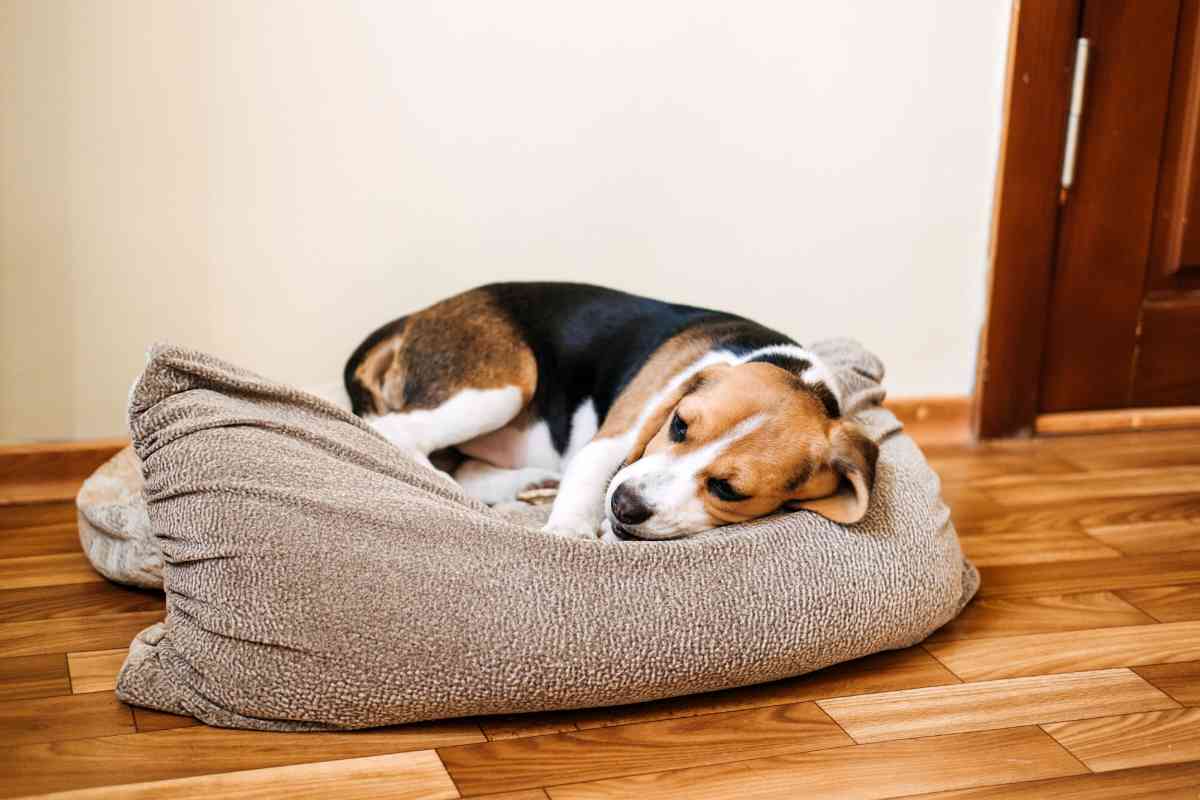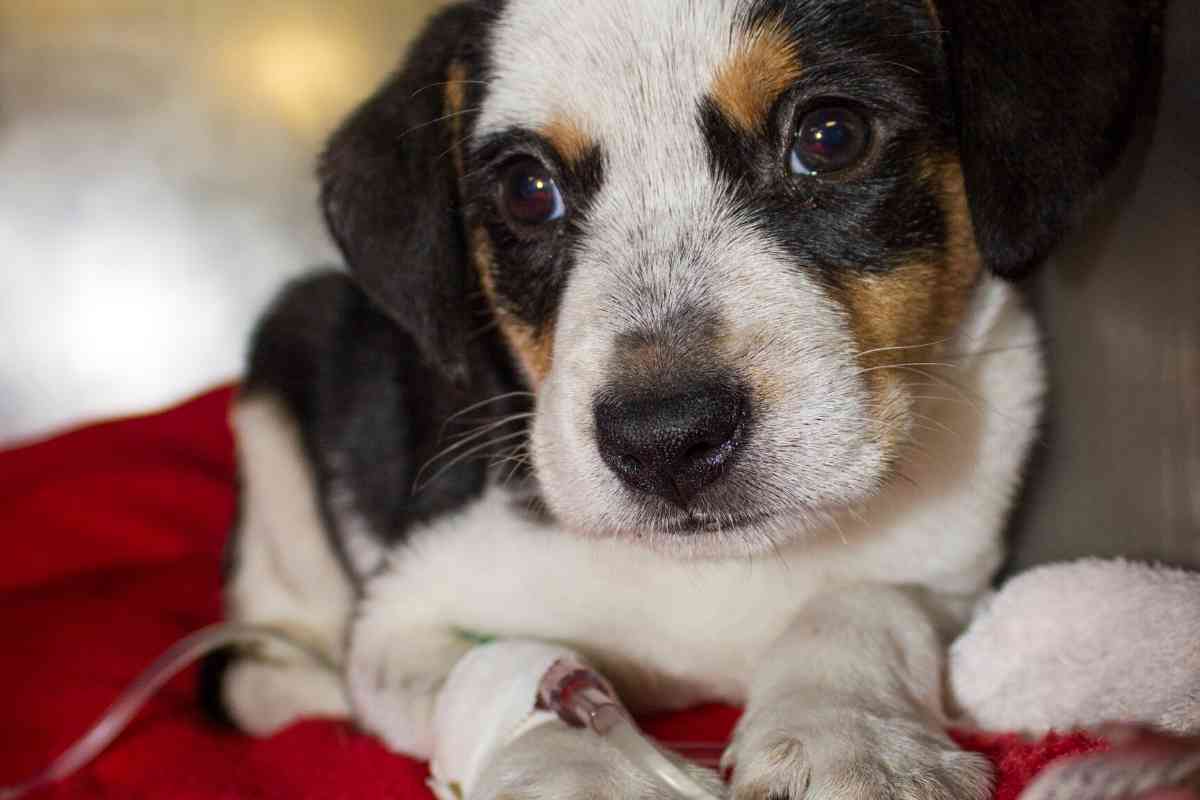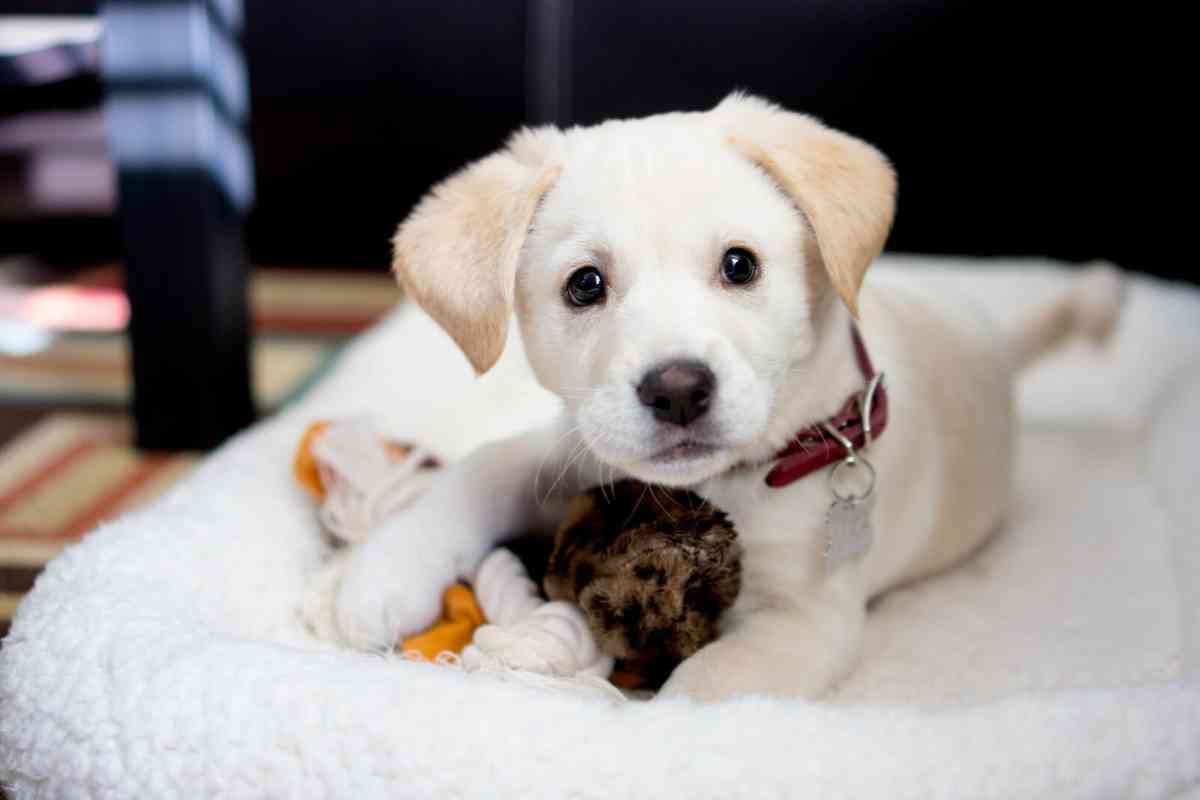Preventing Parvo In Puppies: What You Can Do
Parvovirus can make your dog very sick or even kill the dog. Here’s how to prevent parvo in puppies.

How do you prevent Parvo in puppies?
You should get your dog vaccinated early and keep your dog away from other dogs to prevent infection. Since the virus can kill, don’t take your dog to playgroups or dog parks before it is vaccinated. If you interact with other dogs, change your clothes before you go near your dog.
While my puppy survived getting parvovirus, it might not have. Parvovirus treatments can be expensive, far more so than vaccinations. Get your puppy vaccinated early and be cautious before then.
What is Parvovirus?
Parvovirus is a contagious and potentially fatal disease that can kill a dog or puppy. Vaccines prevent the virus.
Many adult dogs, adolescent dogs, and especially puppies are not vaccinated and can be hurt or killed by this disease.
What Does the Disease Do?
At first, the disease has no symptoms. After the virus multiplies for a few days or a week, the dog becomes obviously sick. The virus attacks the lymph nodes, bone marrow, and in puppies, the heart.
The virus first weakens the dog’s immune system and then attacks the dog’s digestive tract. This leads to bacteria moving from the gut into the body, which may make the dog very sick or kill the dog.
Symptoms of Parvovirus

At first, the dog may lose its appetite, stop drinking enough water, and seem depressed, worn out, and tired. Later on, there will be fever, diarrhea, and vomiting. Diarrhea is a classic sign of advanced parvo. Other diseases often have the same symptoms, so it isn’t necessarily parvovirus.
Take your dog to the vet when you are sure they are sick. Your dog might die if you take it to the vet too late.
How is Parvovirus Treated?
Your dog may need to spend some time in an animal hospital to get better. The dogs will receive intravenous fluids and nutrients to keep them alive while they recover.
A very sick dog won’t be able to receive fluids or nutrients by eating and drinking because its digestive system won’t be functioning.
The dog might also receive blood transfusions, especially if the virus has affected the dog’s bone marrow. Infected bone marrow leads to low blood cell counts.
While antibiotics cannot treat this viral infection, they may help control intestinal bacteria. Medications to control diarrhea and vomiting can also help a dog with this disease.
Get Your Puppy Vaccinated On Time
The sooner you get your puppy vaccinated, the safer it is. However, you cannot safely give vaccinations to very young puppies. The right age for vaccinations depends on the disease.
For parvovirus, a puppy usually gets its first shot at 6 or 8 weeks old. It then gets another few shots; one every four weeks until it is 16 weeks old.
After that, the dog is fully vaccinated, but it needs a booster once a year to maintain immunity.

Keep Your Puppy Away From Other Dogs
If your puppy is not yet vaccinated, it isn’t worth the risk to take your puppy to a play group or a public area where it will be around other dogs. A pet store is also an unsafe place for an unvaccinated puppy.
Remember that you won’t have to be cautious after your dog gets its vaccines. A vaccinated dog can and should be around other dogs. It should be exposed to many situations and new experiences so that it doesn’t end up timid and afraid of unfamiliar situations.
Be Cautious About the Virus
While parvovirus doesn’t spread through the air, the virus can survive anywhere. The virus can survive in bushes, on the ground, or on the grass, plus inside people’s homes.
The best way to avoid the virus for your unvaccinated puppy is to minimize their exposure to gems carried by other dogs.
The Virus Can Remain Alive in the Environment
One of the worst things about parvovirus is how hard to kill it is. Regular soap and water aren’t enough to kill the virus.
You need to clean your house with bleach if it has been contaminated with the virus.
Use a mix of beach (1/30) and water to clean your house. The virus can live on your floor, dog food bowls, clothing, and shoes. It can also survive on your carpet and other areas you cannot clean properly.
The Virus Can Cling to Your Clothes and Shoes

If you are in contact with other dogs and then with your dog, you may expose it to the virus. Don’t think that the virus can’t survive on your clothes or shoes.
Again, the virus is dangerous partly because it can survive for so long in the environment.
Change your clothes and shoes before interacting with your unvaccinated puppy. If you touch another dog, make sure you wash your hands before petting your dog or taking it out. After your dog is vaccinated, you don’t have to be so careful.
Take Your Dog to the Vet in Time
You should take your dog to the vet right away if it is obviously sick. Don’t assume that your dog will get better on its own – it could be parvovirus or another serious problem that may kill your dog.
Many dogs die because their owners take them to the vet too late. Diarrhea, vomiting, and lethargy are the main symptoms of parvovirus.
Sometimes, a dog with the virus will only show one symptom. Take signs of sickness in your dog seriously.
Key Takeaways
- The best way to prevent parvovirus is early vaccination. Take your dog in for the vaccine at six or eight weeks, then for another shot once every four weeks until it is sixteen weeks old.
- Keep a young unvaccinated puppy away from other dogs that might have the virus.
- If an infected dog has been in your home, use a mix of water and bleach to clean the floor. Soap and water won’t kill the virus.